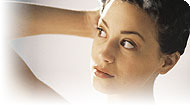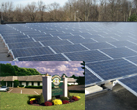Penn Herb Wellness Guide
Acne Rosacea

About This Condition
Acne rosacea, now more accurately known just as rosacea, is a chronic skin condition of the forehead, cheeks, nose, and chin. It consists of flushing, which turns into red coloration from the dilation of the capillaries and can lead to pustules that resemble acne.
Rosacea occurs mostly in middle-aged adults with fair skin. The cause of rosacea is unknown, but there is likely a genetic component. Severe, untreated rosacea can be disfiguring to the face.
Symptoms
The skin of the center of the face—typically on or surrounding the nose—is red and swollen, with acne-like blemishes. As the condition progresses, parts of the eye can become inflamed and the nose may enlarge.
Healthy Lifestyle Tips
Sun exposure, stress, excessive exercise, and extreme temperatures (hot or cold) of weather or bathing water may trigger flare-ups of rosacea, so avoiding these conditions is recommended.1
Copyright 2025 TraceGains, Inc. All rights reserved.
Learn more about TraceGains, the company.
The information presented by TraceGains is for informational purposes only. It is based on scientific studies (human, animal, or in vitro), clinical experience, or traditional usage as cited in each article. The results reported may not necessarily occur in all individuals. Self-treatment is not recommended for life-threatening conditions that require medical treatment under a doctor's care. For many of the conditions discussed, treatment with prescription or over the counter medication is also available. Consult your doctor, practitioner, and/or pharmacist for any health problem and before using any supplements or before making any changes in prescribed medications. Information expires December 2025.


